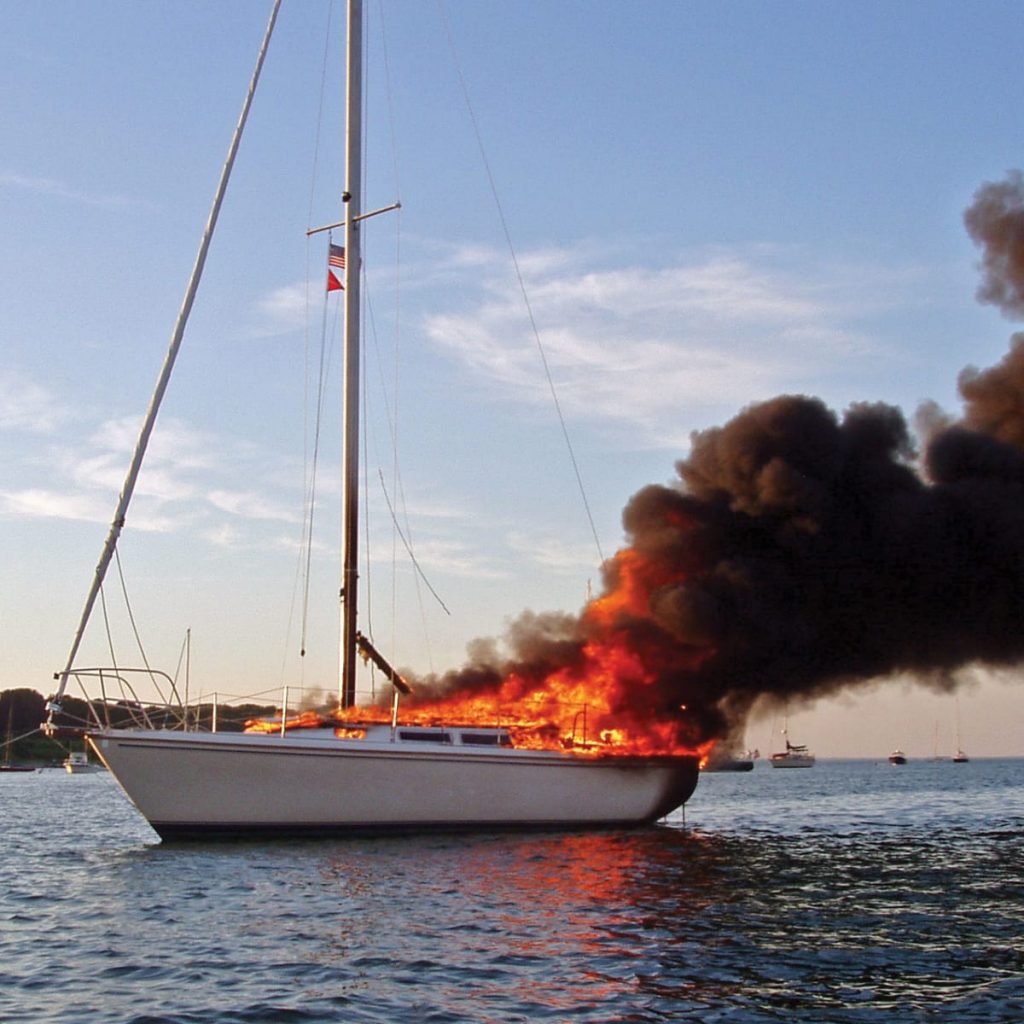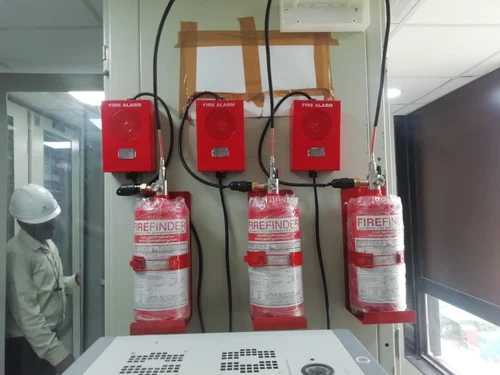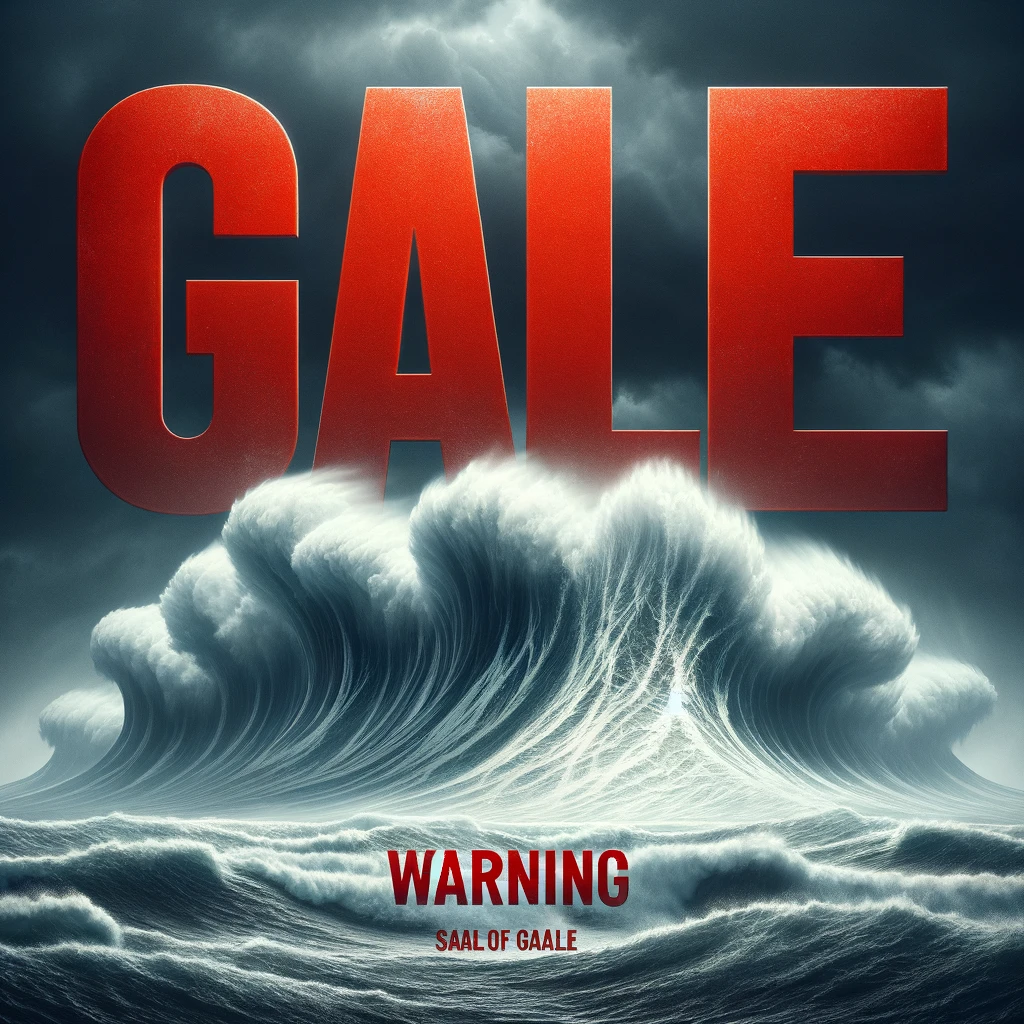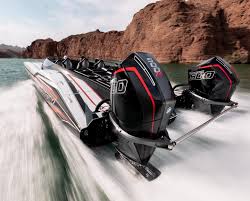Marine Fire Extinguishers: 2024's Latest Life-Saving Tech Innovations
Marine fire extinguishers are essential tools for ensuring the safety of those navigating the waters. They provide a reliable method of fire suppression aboard boats and marine vessels.

As we enter 2024, breakthroughs in fire prevention technology have revolutionized the way marine fire extinguishers serve as life-saving instruments. This article aims to provide insights into the latest advancements and trends in marine fire extinguishers, helping boating enthusiasts and professionals alike make well-informed decisions when it comes to fire safety onboard.
Advancements in fire suppression technology have led to the development of more efficient and effective marine fire extinguishers. These extinguishers are specifically designed to handle the unique challenges of the marine environment.

Regulatory bodies have also played a significant role in raising the industry standards for fire safety equipment. They ensure that the latest 2024 models meet or exceed the demands of modern maritime operations.
Furthermore, innovations in fire extinguisher materials and design have made them more environmentally friendly, easier to install and maintain, and better suited to the various conditions encountered at sea.
Key Takeaways
- 2024's marine fire extinguishers showcase cutting-edge fire suppression technologies for enhanced safety
- Regulations play a critical role in elevating industry standards and promoting efficiency in marine fire extinguishers
- Recent innovations focus on environmental friendliness, ease of installation and maintenance, and adaptability to diverse maritime conditions
Overview of Marine Fire Extinguishers
History and Evolution
Marine fire extinguishers have come a long way since their inception. In the early days, these extinguishers were simply containers filled with water, sand, or other materials to douse flames on ships.
As technology advanced, more effective fire-extinguishing agents were developed, and marine fire extinguishers became a crucial safety device on board vessels.
In recent years, there has been significant progress in the development and improvement of marine fire extinguishers. Advancements in technology have led to extinguishers that are more efficient, easier to use, and more reliable than ever before.
As a result, both recreational and commercial boaters have gained access to life-saving equipment that is designed to mitigate the risks posed by fires on watercraft.
Types and Mechanisms
There are three main types of marine fire extinguishers suitable for use on boats, each designed to tackle different types of fires:
- Dry chemical extinguishers: These devices use a dry chemical powder to interrupt the chemical reaction that sustains a fire. They are often used to extinguish Class A, B, and C fires, which involve ordinary combustibles, flammable liquids, and electrical equipment, respectively.
- Carbon dioxide (CO2) extinguishers: CO2 extinguishers displace oxygen and remove the heat necessary for combustion. They are ideal for use on Class B and C fires and are popular for their non-corrosive properties and ability to leave minimal residue.
- Foam extinguishers: Foam extinguishers work by cooling the fire and coating the burning material, which smothers the flames and prevents re-ignition. These extinguishers are primarily used for Class A and B fires.
| Type | Suitable for Class | Mechanism |
|---|---|---|
| Dry chemical | A, B, C | Interrupts chemical reaction |
| Carbon dioxide (CO2) | B, C | Displaces oxygen, removes heat |
| Foam | A, B | Cools, smothers, and prevents re-ignition |
It is essential for boaters to select the appropriate marine fire extinguisher type to ensure the safety of their vessel and passengers.
Additionally, boat owners should be aware of the permanent installation of fire suppression systems in engine rooms and other high-risk areas. These systems provide an extra layer of protection from potential fires.
Current Technologies in Fire Suppression
Chemical Agents
Chemical agents represent some of the most common fire suppression methods. One popular example is the dry chemical-based fire suppression segment, which is anticipated to register a 5.4% compound annual growth rate, reaching a value of US$11.8bn by 2030.
Some key benefits of using chemical agents include their effectiveness, reliability, and ability to suppress various types of fires.
This growth in demand is primarily driven by the increasing use of smart technologies, robotics, and automation in marine and offshore environments.
Clean Agents
Clean agents are another vital fire suppression solution. These agents are environment-friendly and typically consist of gases that are non-toxic, non-conductive, and do not leave any residue after being discharged.
A highly recommended marine fire extinction system in 2024 is the Amerex Marine Fire Extinguisher, which offers a durable and efficient solution for various setups including home, office, car, and boats.
As clean agents suppress fires without damaging sensitive equipment, they have become valuable assets in spaces featuring electronics and high-value assets.
Water Mist Systems
Water mist systems tackle fire by creating a cooling effect and reducing oxygen levels around the fire. This technology utilizes fine water droplets, resulting in greater surface area and enhanced heat absorption.
The growing importance of safety in the marine industry has led to increased innovation in marine fire extinguishing systems, with water mist systems emerging as an efficient and eco-friendly solution.
2024's Advancements in Marine Fire Extinguishers
Smart Extinguisher Technologies
In 2024, marine fire extinguisher technologies have innovated to better safeguard seafaring assets and lives. One noteworthy advancement in the industry is the introduction of smart extinguishers.
These next-generation fire safety tools incorporate advanced sensors that detect and analyze the type of fire, allowing them to automatically dispense the appropriate extinguishing agent. This greatly reduces the risks and increases efficiency during an emergency situation at sea.
Some groundbreaking features of smart extinguishers include:
- Automatic fire detection: Enables swift action and precise targeting of fires.
- Cloud connectivity: Provides real-time monitoring, reporting, and maintenance updates.
- Flexible agent dispensing: Adapts to different types of fires with minimal user intervention.
These innovations have produced a significant impact on the marine fire extinguisher market. Reputable brands, such as Amerex, invest in research and development to create state-of-the-art smart extinguishers that greatly improve marine fire safety.
Integration with Ship Safety Systems
Another major development in 2024's marine fire extinguishers is the seamless integration with ship safety systems.
Advanced extinguishers can now be connected with a vessel's onboard communication and safety networks, enabling smart features like automatic fire detection and coordinated response efforts.
For example, integrated fire safety systems may include:
- Centralized control: Monitors all extinguishers on the ship, providing a comprehensive view of fire safety status.
- Automated alerts: Sends notifications to the crew and rescue teams in the event of a fire.
- Data-driven insights: Collects and analyzes fire incident data to optimize safety strategies and best practices.
Regulatory Impact on Fire Safety Tech
International Maritime Organization Guidelines
The International Maritime Organization (IMO) has played a crucial role in establishing fire safety standards for marine vessels.
The IMO's guidelines require specific types of fire extinguishers to be installed based on a vessel's size and function.
Key IMO requirements include:
- Portable fire extinguishers must be placed in easy-to-access locations.
- The number of extinguishers should be determined by the vessel's size and fire risk.
- Extinguishers should have proper labels, indicating capacity and type.
2024 updates provide a more concise classification for fire extinguishers, replacing the old B-I and B-II labels with 5-B, 10-B, or 20-B classifications.
Nation-Specific Regulations
In addition to international regulations, various nations have their own specific safety standards. In the United States, the Senate, House, and Congress have worked collaboratively to enact the Building Safety Act and Fire Safety Act of 2022. These acts focus on enhancing fire safety measures and addressing emerging risks.
State-level regulations, such as those in Alabama, ensure adherence to national standards by enforcing local codes and regulations. This approach helps maintain a consistent, comprehensive approach to firefighting and fire safety across the country.
Popular marine fire extinguishers in 2024 include:
- Water Extinguishers: Ideal for combating fires fueled by wood, paper, and textiles.
- Foam Extinguishers: Effective against liquid fires like petrol or diesel.
- CO2 Extinguishers: Designed for electrical fires, leaving no residue. [^5^]
By following these regulations, marine vessels can be better equipped with the latest fire extinguishing technologies, ultimately contributing to a safer boating environment.
Market Analysis and Consumer Insights
Brand Dominance and Innovation
In the competitive world of Marine Fire Extinguishers, the industry has many players who constantly innovate to maintain their market share. The Global Marine Fire Extinguishers Industry Market report predicts a steady market growth. Additionally, the Fire Extinguisher Market Analysis by GMI8365 indicates over 4.2% CAGR between 2024 and 2032. Some key factors driving this growth include:
- Increasing industrialization and manufacturing activities
- Growing emphasis on safety regulations across all industries
- Technological advancements in fire extinguisher design and functionality
The Marine Fire Extinguishing System market analysis highlights the impact of regional differences on growth. North America and Europe lead the market with well-established maritime industries and stringent safety regulations.
Survey of User Satisfaction
Understanding consumer preferences and satisfaction levels is crucial to evaluating the Marine Fire Extinguisher market. Manufacturers strive to develop products that not only comply with safety standards but also satisfy their user base. To gauge satisfaction and gain insight into customer preferences, regular surveys and interviews are conducted.
A recent survey uncovered the following insights:
- Reliability: Users prioritize the reliability of extinguishers in terms of effective fire suppression and ease of use during emergencies.
- Maintenance: Frequent inspections and low-maintenance requirements are preferred as they ensure the extinguisher's functionality when needed.
- Affordability: Cost-effective solutions without compromising on quality are considered the best choice for various applications.
From these insights, it is clear that consumer preferences strongly influence the market. Manufacturers who can create reliable, low-maintenance, and affordable products will dominate the industry and contribute to its steady growth in the coming years.
Environmental and Operational Considerations
When selecting a marine fire extinguisher, it's essential to consider both environmental and operational factors. Modern marine fire extinguishers feature the latest life-saving technologies, taking into account the unique challenges posed by the marine environment.
One crucial aspect to consider is the extinguisher's materials of construction. According to the International Maritime Organization, it's essential for exposed parts and adjoining dissimilar metals to be carefully selected to function properly in the marine environment. Materials like steel offer strength, durability, and corrosion resistance, making them suitable for use in marine fire extinguishers.
When it comes to operational considerations, marine fire extinguishers should be easy to use and effective at extinguishing fires, even at a longer distance. For instance, the Amerex Marine Fire Extinguisher is a multipurpose item that can be safely used around the office, home, car, boats, and other locations. Its design allows it to extinguish fires from a distance, providing an extra safe and harmless experience.
In terms of environmental impact, modern fire extinguishers should minimize the use of harmful chemicals. Environmentally-friendly alternatives, like electrically-driven solutions, should be considered as they generate minimal environmental impact. Electricity can power fire suppression systems, making them a more sustainable choice.
Proper maintenance is also critical to ensure reliable operation. The International Maritime Organization recommends following the respective maintenance and inspection guidelines for fire protection systems and appliances, including marine fire extinguishers.
Installation and Maintenance Guidelines
Marine fire extinguishers play a crucial role in ensuring the safety of individuals on board vessels. It is vital to adhere to guidelines for installation and maintenance, so they remain effective and meet international standards.
IMO Resolution MSC.1/Circ.1432 provides the Revised Guidelines for the maintenance and inspection of fire protection systems and appliances. These guidelines recommend that fire protection systems be installed and maintained according to the ship's maintenance plan and the manufacturer's instructions. The intervals for different maintenance procedures are detailed in Appendix A of the document.
For fire extinguishers, the improved guidelines published by IMO Assembly Resolution A.951(23) should be followed for their installation, inspection, and maintenance. The fire extinguishers should be easily accessible, with their locations, clearly marked. Ensure that fire extinguishers are labeled correctly, as amended in new marine fire extinguisher law for boats from 2018 and onwards.
Below is a brief outline of the required maintenance tasks for marine fire extinguishers based on the guidelines mentioned above:
- Monthly: Visual inspection for signs of damage or corrosion, ensuring proper pressure and charge.
- Annually: Thorough examination performed by a qualified person, weighing, and recharging if necessary.
- Every 5 years: Hydrostatic testing and refilling as required, following the manufacturer's guidelines.
Case Studies and Real-World Applications
Incident Analysis
In recent years, the maritime industry has seen numerous incidents involving fires on vessels. In one such case, a scrap metal fire was extinguished, but the vessel sank as a result of water damage. Another incident involved a fire and massive blast within the engine room, causing a blackout and a complex firefighting scenario.
Key Lessons Learned:
- Adequate firefighting equipment is essential for vessel safety.
- Fire containment measures should be in place to minimize damage.
- Collaboration between crew members and shore-based firefighting teams is crucial.
Effectiveness in Diverse Scenarios
Modern marine fire extinguishers are designed to perform in various environments with high efficiency. For example, Amerex Marine Fire Extinguishers are multipurpose items that can be used safely across different locations, like offices, homes, cars, boats, and more. Featuring a sturdy steel construction, these extinguishers are both strong and durable.
In another incident, a cargo fire took a total of 10 days to extinguish. This highlights the importance of continuously improving firefighting technologies in the maritime industry. As of 2024, the top trends in the industry include advancements in artificial intelligence (AI) for predictive maintenance and route optimization.
AI can be applied to fire safety for early detection, response, and the prevention of fires that pose risks, especially critical for rare diseases research in on-board laboratories, where using a knowledgeable and neutral approach is essential to avoid damage to sensitive experiments.
Conclusion
In recent years, marine fire extinguishers have seen significant advancements in technology, providing enhanced safety measures for a variety of situations on the water.
One of the top choices in 2024 is the Kiddo Marine Fire Extinguisher, which is designed to control A, B, and C class fires, making it versatile and user-friendly.
Marine-specific extinguishers are not only compact and lightweight, but also meticulously designed to withstand harsh marine environments.
This ensures swift access and control during emergencies, which are critical factors in effectively putting out fires at sea. (source: Safeguarding Seafaring Ventures: The Crucial Role of Marine Fire ...)
As regulations and safety protocols continue to evolve, marine fire extinguishers will no doubt adapt to meet these new requirements.
The industry's future outlook is one of continuous improvement, with manufacturers constantly seeking to develop more efficient, durable, and user-friendly extinguishing solutions.
Marine fire extinguishers are an essential component of marine safety, offering reliable protection to those at sea.
By staying informed about the latest in life-saving technology like the Kiddo Marine Fire Extinguisher and adhering to the changing regulations, boaters can ensure a safer, more enjoyable experience on the water.
Frequently Asked Questions
How have the USCG fire extinguisher requirements for boats changed in 2024?
In 2024, the US Coast Guard (USCG) fire extinguisher requirements changed. The new regulation requires all boats from model year 2018 and newer to carry fire extinguishers labeled as 5-B, 10-B or 20-B. The older B-I or B-II designations are no longer acceptable [^[1]^(http://www.boatingmag.com/boats/new-marine-fire-extinguisher-law-for-boats/)]. Boats older than 2018 can still carry extinguishers labeled B-1 and/or B-11.
What are the criteria to choose the best fire extinguisher for marine use?
When choosing a fire extinguisher for marine use, consider these criteria:
- The extinguisher's USCG classification ensures compliance with safety standards.
- A versatile extinguisher with a broad range of applications, such as one able to handle class A, B, and C fires.
- A durable, corrosion-resistant build to withstand harsh marine environments.
- Accessibility and ease of use during emergencies.
For example, the Amerex Marine Fire Extinguisher offers a multipurpose solution, made from steel for strength and durability.
What advancements have been made in marine fire extinguisher technology recently?
Recent advancements in marine fire extinguisher technology include compact and lightweight designs, eco-friendly materials, increased effectiveness, and integration with smart boat systems.
These improvements make fire extinguishers more user-friendly, efficient, and environmentally sustainable for boat owners.
What is the minimum number of fire extinguishers required for boats with installed fuel tanks?
According to the BoatUS Foundation, the minimum number of fire extinguishers required for boats with installed fuel tanks depends on the boat's length:
- Less than 26 feet: At least one 5-B or one 10-B extinguisher.
- 26 to 40 feet: At least two 5-B or two 10-B extinguishers, or one 20-B extinguisher.
- 40 to 65 feet: At least three 5-B or three 10-B extinguishers or one 20-B and one 5-B or one 10-B extinguisher.
How do LifeSafe fire extinguishers compare with traditional marine fire extinguishers?
LifeSafe fire extinguishers are an innovative marine fire extinguisher technology that offers various benefits over traditional marine fire extinguishers. They are compact, lightweight, environmentally friendly, and rechargeable. LifeSafe extinguishers use a non-toxic aerosol to suppress fires, making them effective and safe to use in marine environments.
What type of fire extinguisher is mandatory for a vessel with a permanently installed fuel tank?
A vessel with a permanently installed fuel tank must have a fire extinguisher that meets the US Coast Guard classification for at least 5-B or higher. The required classification depends on the boat's length [^[1]^(http://www.boatingmag.com/boats/new-marine-fire-extinguisher-law-for-boats/)].
This can be a traditional marine fire extinguisher or an approved alternative, such as the LifeSafe fire extinguisher.
Charlie is Editor-in-Chief of Sea Magazine







